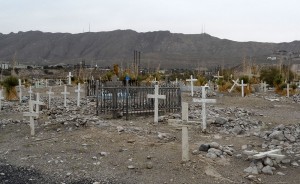A pang of sorrow hit as the ASARCO smokestacks came tumbling down
|
EL PASO – The skyline in El Paso changed forever on Saturday April 13 when the two ASARCO smokestacks imploded leaving an empty space, a day prior to the demolition of City Hall. The stacks fell in slow motion, as if slowly saying goodbye to their longtime home. Viewing the demolition from the University of Texas at El Paso (UTEP) parking lot across from Interstate 10, I reflected on the experience I had writing a story on the last-ditch efforts to save the stacks. The stacks had a profound historical impact on the city and many people wanted to stop the demolition. The first event I attended was a protest lead by El Paso AWARE, an organization that focused on stopping the demolition until proper testing was done.

